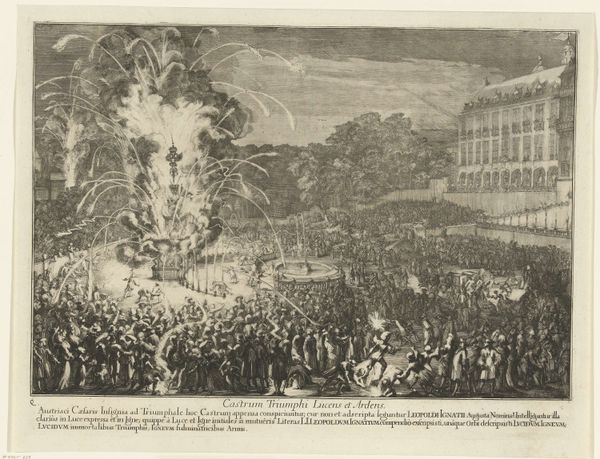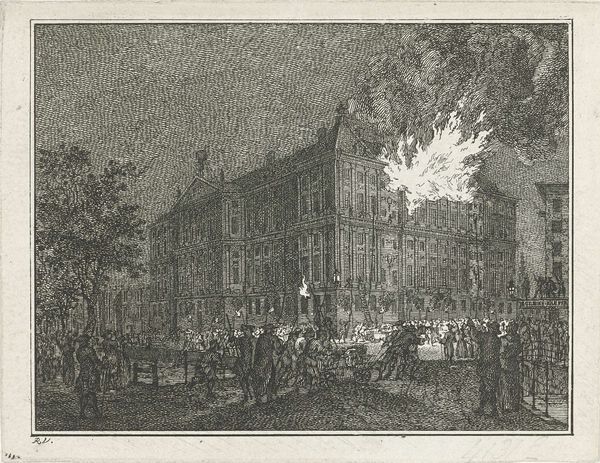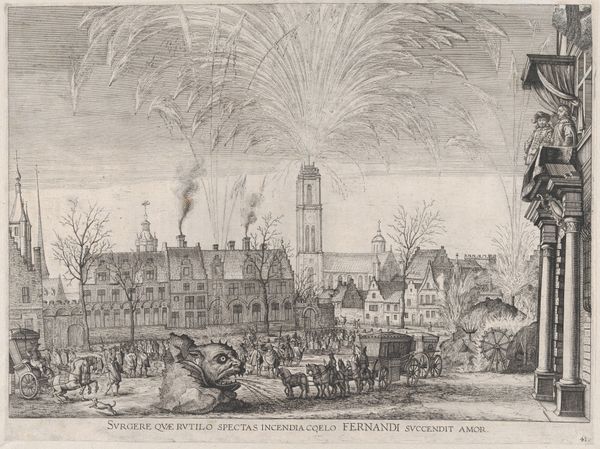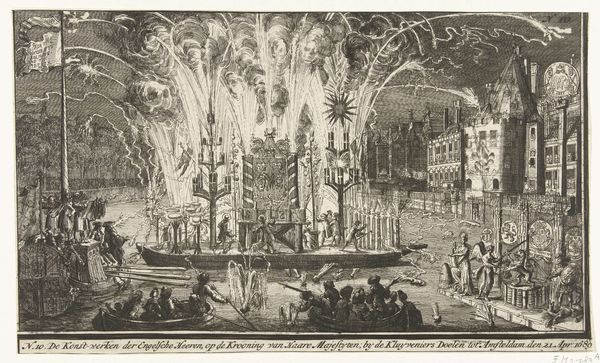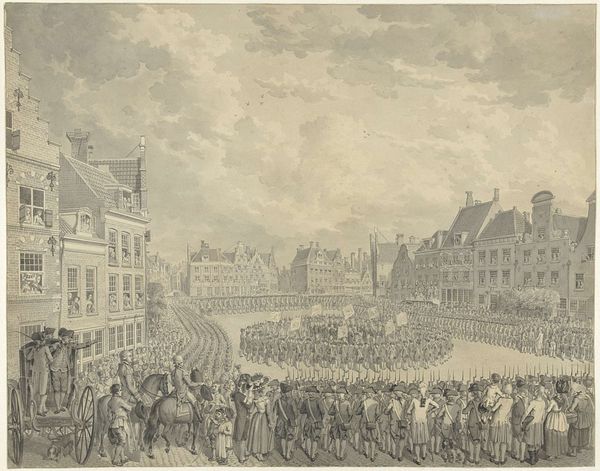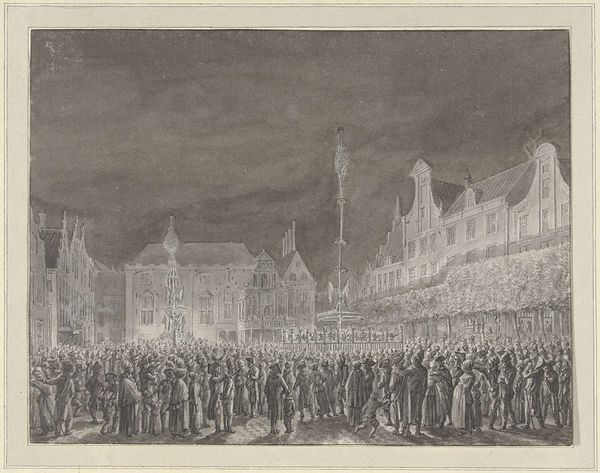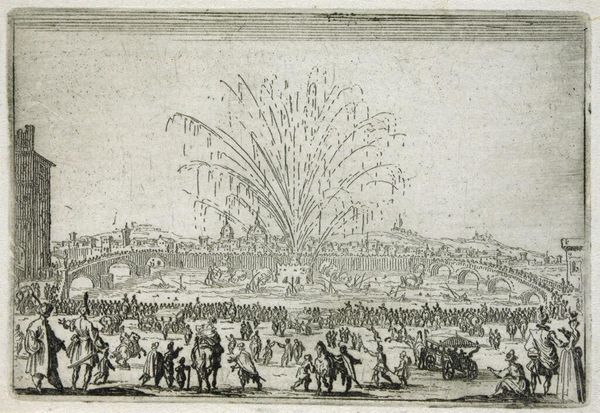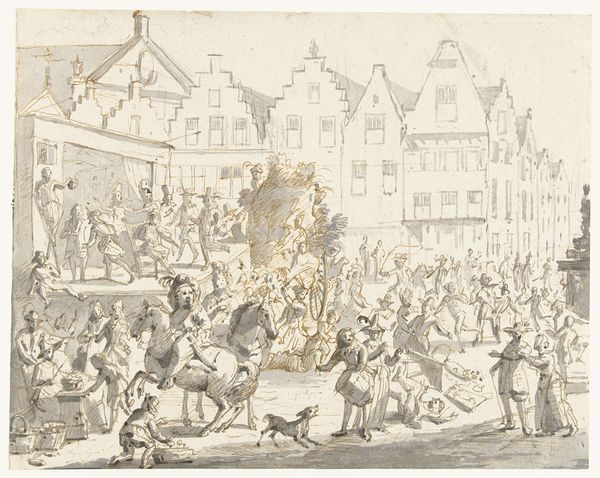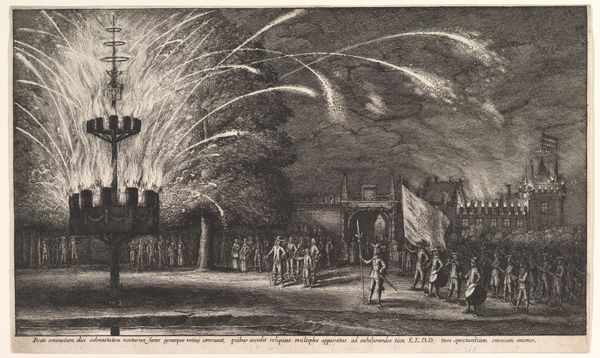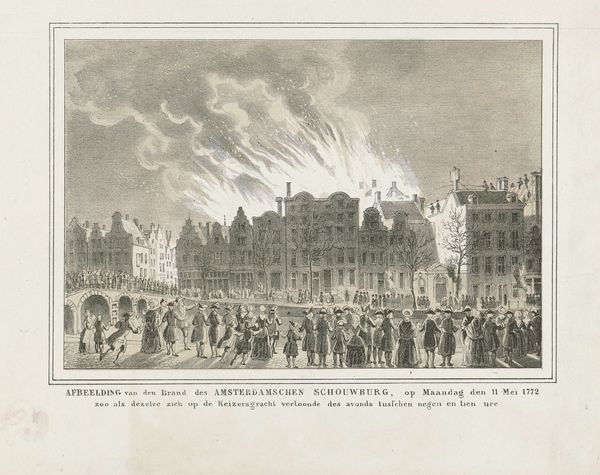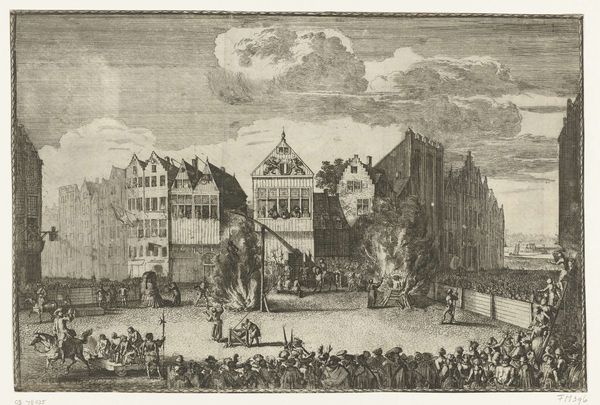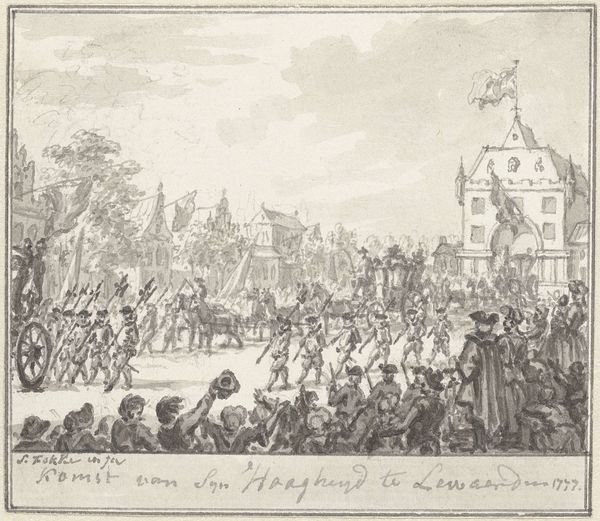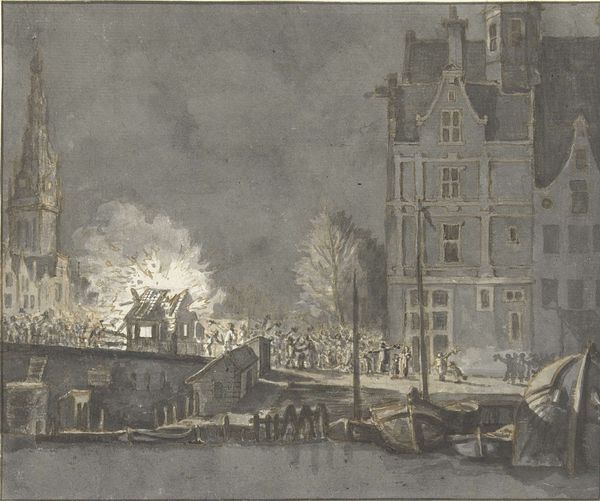
drawing, print, ink, engraving
#
drawing
#
narrative-art
#
baroque
#
pen drawing
# print
#
ink
#
cityscape
#
history-painting
#
engraving
Dimensions: height 409 mm, width 550 mm
Copyright: Rijks Museum: Open Domain
Curator: This dynamic print, “Fireworks at the arrival of Leopold I in Brussels, 1686,” was created by Romeyn de Hooghe. It’s a stunning depiction of a city square alive with spectacle. Editor: My initial impression is one of organized chaos! There's so much detail, all rendered with incredible precision using ink. It evokes a sense of wonder mixed with the frenzy of a massive crowd. Curator: De Hooghe was commissioned to document this historical event. Leopold’s arrival was a carefully orchestrated piece of political theatre and this print played a crucial role in disseminating that message. The means of its production--printmaking—allowed it to reach a broad audience, shaping public perception of Leopold's reign. Editor: Absolutely. We see how the celebratory event is framed by the architecture of Brussels, with fireworks dominating the skyline. But, what sort of social conditions allow the labor and the materials for such a lavish display? Who exactly benefits from its production and consumption? Curator: The print highlights a key moment in the construction of power. Notice the detailed portrayal of the spectators – from the elites in carriages to the common folk jostling for a view. Their engagement, or what is framed to be engagement, legitimizes Leopold's power. The institutions backing De Hooghe directly profited from this exchange. Editor: It’s interesting to consider how De Hooghe utilized engraving to create a sense of depth and movement, almost mirroring the actual explosions. But let's not forget that this imagery could easily be manipulated for ideological ends. It becomes less about the real people and more about the symbol of an orderly state and its authority. Curator: Precisely. And the print's creation and distribution reinforces specific social and political structures. We see evidence of skilled artisans involved in printmaking and it makes one wonder of the resources, skill, and social capital required to even disseminate the event, however indirectly. Editor: De Hooghe, perhaps unwittingly, delivers both propaganda and documentary. It forces us to analyze art as a cultural artefact, reflecting and influencing political thought in Europe. Curator: An image meant to broadcast power, that we can now re-examine through the lens of history and class. Fascinating.
Comments
No comments
Be the first to comment and join the conversation on the ultimate creative platform.
